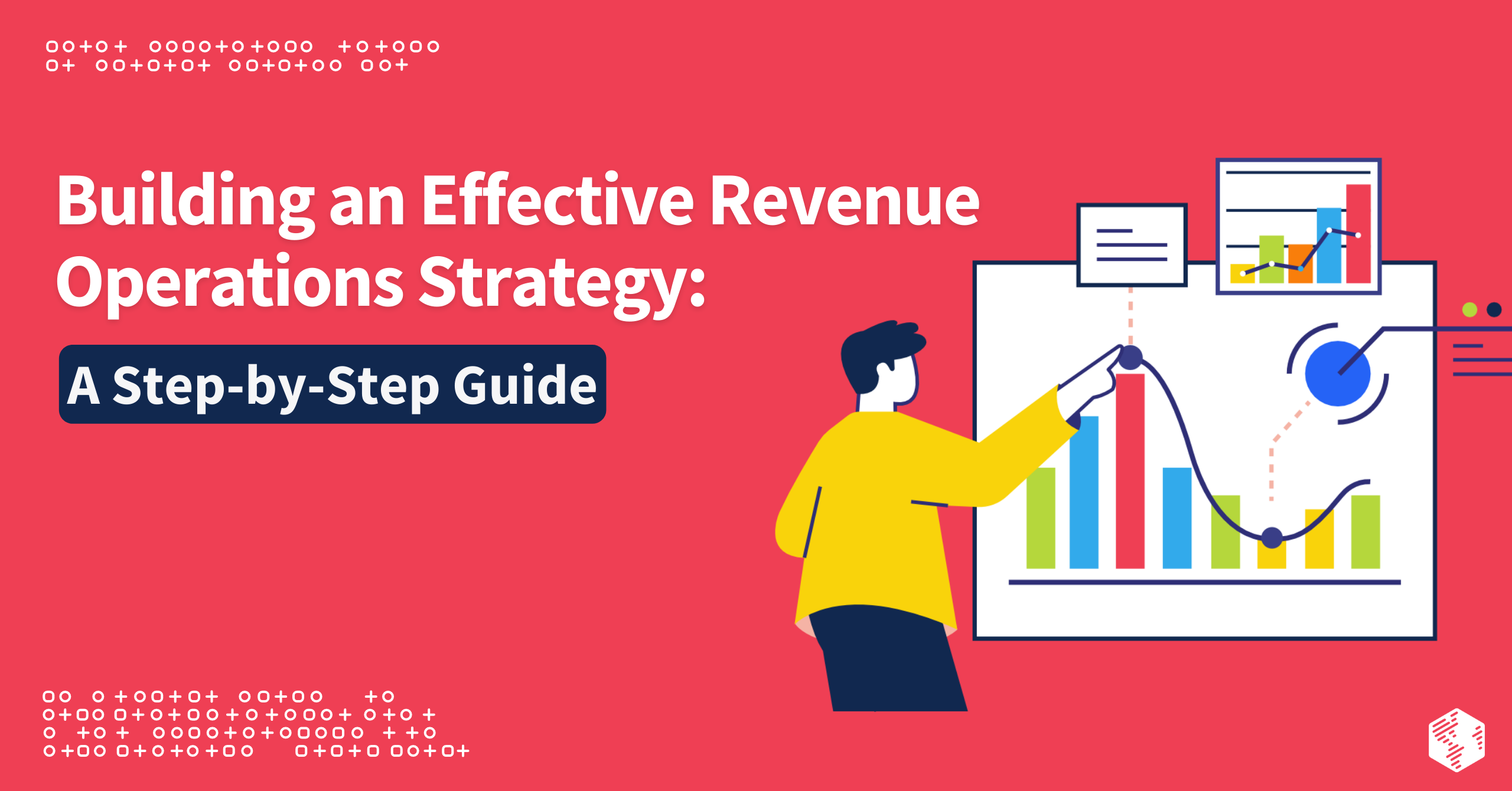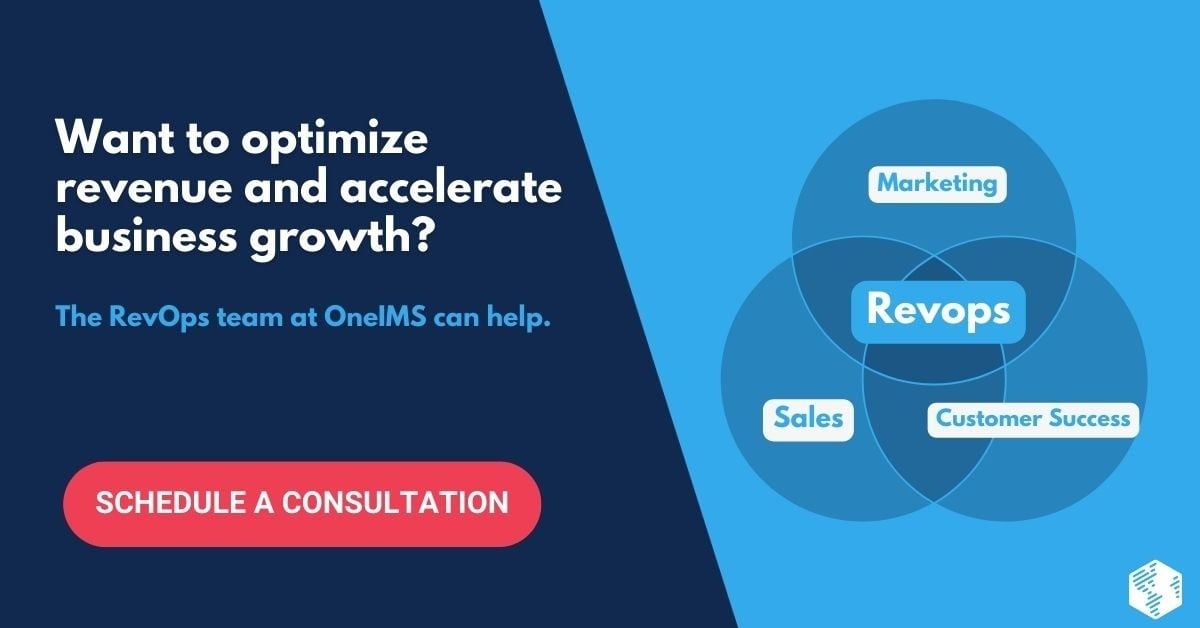Table Of Contents
Today’s business-to-business (B2B) organizations are starting to see the value of revenue operations (RevOps) to operate more efficiently and find new growth opportunities. RevOps is now vital to a B2B company’s success, and if your business hasn’t invested in revenue operations, it’s time to recognize the importance of this strategy.
And the good news: According to the latest RevOps stats, almost half of all companies have not invested in a revenue operations strategy—and they don’t plan to in the near future. That means you can get ahead of the competition and be a leader in your industry by implementing a RevOps framework.
Now is the perfect time to invest in RevOps and develop a strategy that maximizes the growth and revenue potential of your B2B company.
What Is RevOps (& Why Is It Important)?
Revenue operations is an organizational methodology that unlocks the revenue growth potential of a company.
Specifically, RevOps identifies opportunities for growth, streamlines processes and systems to operate at peak efficiency, and aligns your customer-facing teams (marketing, sales, and customer success) under the same company-wide revenue goals—among other things. Cross-departmental alignment and data transparency are foundational to RevOps, and this increased visibility is key to creating a B2B organization that works in tandem to meet your revenue goals.
How to Build a Revenue Operations Strategy
To maximize the performance of your customer-facing teams, achieve scalable growth, and increase revenue across the board, you need to create and implement a revenue operations strategy.
We’ve defined a set of eight steps that B2B companies of any size—and in any industry—can follow to build an effective RevOps strategy. Of course, every organization is different, so the details may change based on your unique circumstances and goals, but these steps are the ideal starting place.
Whether you are starting to build a RevOps strategy from the ground up or you want to optimize your existing revenue operations practices, follow these steps.
Step 1: Define Your Revenue Goals
If you don’t know where you’re going, how will you know when you get there?
Clearly defined revenue goals and objectives are the foundation of any successful RevOps strategy. Establishing these goals will allow you to then identify key performance indicators (KPIs), monitor the performance of your customer-facing teams, and optimize your revenue operations strategy to make it even more efficient.
Focus on defining SMART revenue goals:
- Specific
- Measurable
- Achievable
- Relevant
- Time-bound
While traditional goals are usually vague (“increase revenue”) or unattainable (“triple our monthly revenue in 30 days), SMART goals—such as reducing the length of your sales cycle by 15% in eight months or increasing annual revenue by 5% in 12 months—are strategic and in line with the values of your B2B organization.
When it’s time to develop a RevOps framework and define revenue operations processes, you can break down these goals into specific steps and use those incremental milestones to build your strategy. These goals will also guide the alignment of your customer-facing teams, so invest time and resources into defining your revenue goals before moving forward.
Step 2: Assess Your Current Revenue Operations Practices
Before making any changes, you need to perform an audit of your current revenue processes.
A RevOps audit will reveal critically important aspects of your business operations:
- Opportunities for revenue growth
- Problems with your current revenue processes
- Inconsistencies among the goals and processes of your customer-facing teams
- Areas along your revenue funnel that lack defined processes and workflows
Whether you hire a revenue operations expert to assess your current practices or tackle this task in-house, understanding the current revenue state of your B2B organization will provide you with valuable insights and inform future decision-making.
Step 3: Develop a RevOps Framework
A revenue operations framework is the formula for how your B2B company will implement a RevOps strategy—and this formula will be different for every organization. Your revenue goals, business model, size, and industry are important factors in developing a revenue operations framework.
Mapping out your revenue operations processes starts with determining how RevOps fits into your existing organizational structure.
Most companies establish a revenue operations team, working as an umbrella under which company-facing departments live. Others outsource services from RevOps experts to ensure the process runs smoothly from the very beginning. Whichever approach you take, know that making one entity responsible for the people, processes, and platforms involved in RevOps is the best way to ensure your teams are working together to meet your revenue goals.
It’s also time to identify the specific KPIs your revenue operations team should track. Metrics like customer lifetime value (LTV or CLV), monthly or annual recurring revenue (MRR or ARR), conversion rate, and customer acquisition cost (CAC) are all possibilities.
RevOps frameworks vary from organization to organization; determine what works best for your company.
Step 4: Align Your Marketing, Sales, & Customer Success Teams
Customer-facing departments are traditionally siloed into a marketing team, sales team, and customer success team. These teams rarely communicate (other than passing a potential customer from one group to the next), and they likely don’t share data, processes, or ideas, either.
The RevOps approach is to encourage cross-departmental communication, alignment, and collaboration. Not only should your customer-facing teams share the same goals and openly communicate with one another, but they should also work together to find new solutions.
Ensure members of these teams are always on the same page:
- Schedule regular meetings to share updates and insights
- Establish goals and metrics for each department that support your organization’s overall revenue goals
- Communicate regularly across departments to encourage cross-departmental collaboration
- Consolidate data and processes into a central system that everyone can access
By aligning your marketing, sales, and customer success teams, you will see higher returns, improved efficiency, and increased revenue.
READ: RevOps vs SalesOps: Which One Is Right for Your Company?
Step 5: Implement RevOps Tools & Technology
Technological platforms play an important role in any successful RevOps strategy. The right software, platforms, and tools can make all the difference in implementing your revenue operations framework.
Consider tools and technology that support your RevOps framework and help your customer-facing teams collaboratively meet your revenue goals:
- Customer relationship management (CRM) platforms: Gain deeper insights into customer behavior and strengthen relationships to drive revenue growth
- Marketing automation tools: Streamline processes and automate tedious tasks, leaving your team members free to focus on value-added operations
- Data analytics software: Get the most out of your RevOps KPIs, metrics, and customer behavior data so you can make informed decisions
- Sales enablement technology: Provide your sales representatives with the support they need to work at peak efficiency
Implementing these (and other) RevOps tools will streamline your revenue operations processes, help you manage and organize data more efficiently, and provide valuable insights—all of which can lead to an improved return on investment (ROI).
Step 6: Define Revenue Operations Processes
Once you have the people (your RevOps and customer-facing teams) aligned and your platforms (your RevOps tech stack) ready to go, you need to define your revenue operations processes.
RevOps processes are the key steps and specific actions that you will need to take to achieve your revenue goals. Start by identifying the major steps in the customer journey and documenting the processes and workflows your team needs to follow in order to achieve maximum revenue potential.
You should also clarify your KPIs and define what success looks like for every department, process, and campaign.
The key to success here is in the details—specifically, the data that powers your RevOps strategy. Set up a centralized repository for data that people across your organization can access as needed to make informed decisions as well as a knowledge base that all departments can use as a specific action plan.
Step 7: Create a Training & Development Plan
Your B2B company’s greatest asset is your team—don’t let this resource go to waste. Create a long-term training and develop plan so your employees understand the importance of RevOps, learn how to use revenue operations technology to the fullest extent, and get training on the fundamentals of your revenue goals.
Regular company-wide meetings or workshops centered on the teams that fall under your RevOps umbrella are valuable opportunities for employees to collaborate and strategize. Sales can learn from marketing, marketing can learn from customer success, and everyone can learn from revenue operations. Together, these teams can develop into powerhouses that are focused on exceeding your revenue goals—and it all starts with creating a training and development plan.
When your team is invested in RevOps and trained on best practices, you’ll have everything you need to reach your revenue goals.
Step 8: Review & Optimize Your RevOps Strategy
Tracking performance metrics, KPIs, and customer data over time allows you to gain valuable insights into the revenue operations of your B2B company. You can figure out what’s working, what isn’t, and what you can do to optimize your RevOps strategy.
Look back at the revenue goals you defined in Step 1 and the KPIs you developed in Step 3. Regularly monitor and analyze these metrics to ensure you are on track to meet your revenue goals.
By periodically evaluating your RevOps performance, you can analyze the results and make data-driven decisions on how to improve it.
Get Started with RevOps at OneIMS
Implementing revenue operations across your B2B organization is not a one-and-done deal. An effective RevOps approach requires a carefully planned and data-driven strategy that you regularly monitor, analyze, and adjust to ensure you are performing at peak efficiency.
At OneIMS, our team of RevOps experts is ready to help your company create a revenue operations strategy that maximizes your growth potential and transforms your business into a revenue-generating machine. We have a long history of working with companies in a variety of industries to develop innovative and data-driven marketing solutions, and we pride ourselves on producing measurable and sustainable results.
But you don’t have to take our word for it. View testimonials from our clients and read our blog to get an idea of our training, experience, and track record of success.
Are you ready to create and implement a B2B revenue operations strategy? Schedule a consultation with us today to get started.






